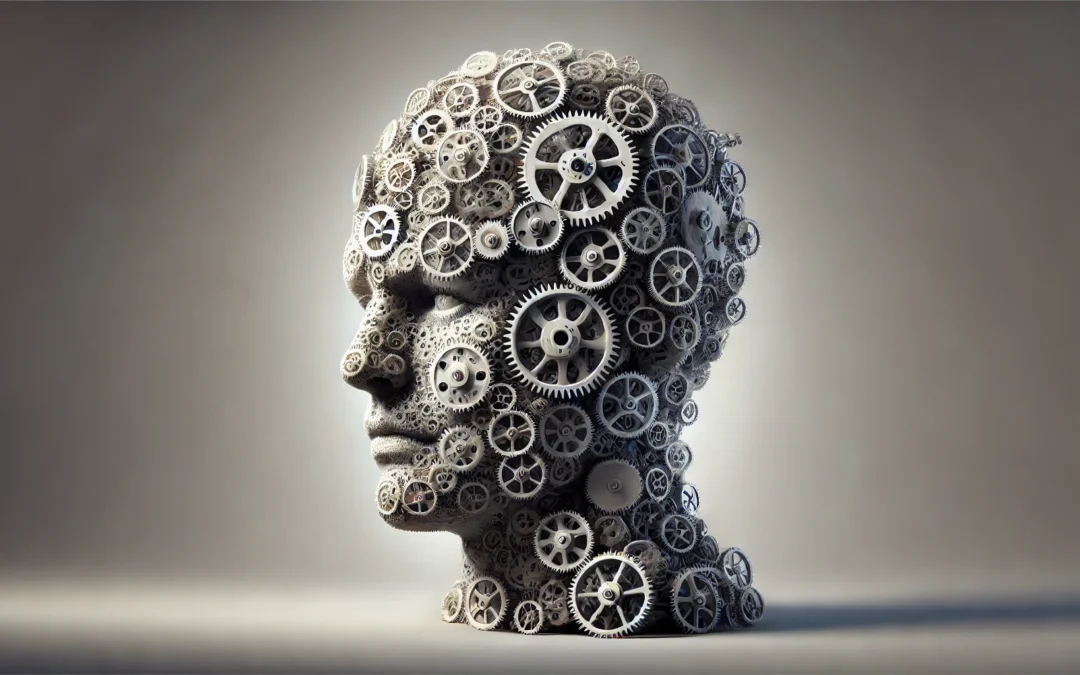Consumerism is a pervasive force in our modern world, shaping the way we live, what we buy, and even how we perceive success and happiness. It’s a phenomenon that influences our daily lives in countless ways, and its impact is both profound and multifaceted. In this article on the top 30 examples of consumerism, we will journey through various facets of this societal and economic force.
What is Consumerism?
Consumerism is a societal phenomenon characterized by the relentless pursuit of acquiring goods and services, often driven by a culture that places a premium on material possession and conspicuous consumption. At its core, consumerism reflects an economic and social ideology where the act of buying and owning is not merely a transaction but a defining aspect of individual identity and status.
In the consumerist landscape, the emphasis is on continuous purchasing and the perpetual desire for the latest products, contributing to a cycle of relentless consumption. Advertisements and marketing play a pivotal role in shaping these consumerist tendencies, influencing preferences and fueling the appetite for novelty.
Critics argue that unchecked consumerism can lead to a range of societal issues, including environmental degradation due to excessive resource exploitation and waste generation. Additionally, the constant pursuit of material satisfaction may contribute to a sense of dissatisfaction and unfulfillment, as genuine well-being becomes overshadowed by the pursuit of possessions.
While consumerism is deeply ingrained in modern societies, there is an ongoing dialogue about striking a balance between economic growth and the well-being of individuals and the planet. This discussion encompasses not only personal choices but also broader considerations about the sustainability of consumption patterns in the face of global challenges.
In essence, consumerism goes beyond the act of buying; it encapsulates a complex interplay of cultural, economic, and environmental factors that shape our relationship with goods and services in the contemporary world.
Top Best Examples of Consumerism
1. Online Shopping – The rise of online shopping, facilitated by platforms like Amazon and others, has transformed the way people buy products. It offers convenience and a vast array of options, making it easy for consumers to purchase goods from the comfort of their homes.
2. Fast Fashion – Brands like H&M and Zara have popularized the concept of fast fashion, producing affordable, trendy clothing at a rapid pace. This encourages consumers to buy more frequently as they chase the latest styles.
3. Black Friday Sales – Black Friday has become an iconic shopping event. It symbolizes consumerism as people camp out and rush to stores for the promise of discounted items. It highlights the materialistic side of holidays.
4. Advertising – Advertisements are pervasive in our lives, bombarding us with messages about products. Brands invest heavily in advertising to create and maintain demand for their products, often leading to increased consumption.
5. Subscription Services – Subscription-based models have gained popularity in recent years. From streaming platforms like Netflix to monthly subscription boxes for various products, these services foster ongoing consumption and a sense of always having something new.
6. Planned Obsolescence – Some products are designed with a limited lifespan in mind. This strategy encourages consumers to replace their items more frequently, contributing to a throwaway culture.
7. Credit Cards – The accessibility of credit cards can lead to overspending, as they provide a way to purchase items even when the funds aren’t readily available. This can result in the accumulation of debt.
8. Fast Food Chains – Fast-food restaurants have made eating out a common and frequent occurrence, contributing to unhealthy eating habits and consumerism in the food industry.
9. Social Media Influencers – Influencers on platforms like Instagram and YouTube often collaborate with brands, promoting products to their followers. Their endorsements fuel consumerism and a desire to keep up with trends.
10. Holiday Decorations – Many people buy new decorations for every holiday or season, contributing to consumerism through seasonal consumer goods.
11. Luxury Brands – High-end fashion and accessories from luxury brands promote conspicuous consumption, where individuals buy items to display their social status or wealth.
12. New Smartphone Releases – Frequent releases of new smartphone models encourage consumers to upgrade even if their current device is still functional. This planned obsolescence drives consumerism in the tech industry.
13. Celebrity Endorsements – When celebrities endorse products, it can significantly influence consumer choices. People often buy items they see their favorite stars using or endorsing.
14. Sales and Discounts – Consumers often wait for sales, discounts, and promotions to make purchases. This reflects the value placed on acquiring products at a reduced cost.
15. Fast Food Advertising – The constant bombardment of fast food advertising through television, billboards, and digital media encourages impulsive purchases and drives consumerism in the fast-food industry.
16. Grocery Shopping – Supermarkets often use strategies like bulk deals and promotions to encourage customers to buy more than they initially intended, contributing to consumerism in the food retail sector.
17. Home Renovation Shows – Home improvement programs inspire people to undertake costly home renovation projects, as they aspire to create spaces that reflect the latest trends and styles.
18. Fitness Gadgets – Frequent releases of fitness trackers, equipment, and apps encourage consumers to keep buying the latest in pursuit of a healthier lifestyle, contributing to consumerism in the wellness industry.
19. Fast Food Challenges – Eating challenges, where individuals consume massive quantities of food, have become a form of entertainment that encourages overconsumption, especially in the realm of fast food.
20. Social Media Shopping Tags – Social media platforms have integrated shopping features that allow users to buy products directly from posts. This seamless experience promotes consumerism.
21. Product Placements in Movies and TV Shows – Subtle advertising in the form of product placements in entertainment media influences consumer choices as viewers want to emulate their favorite characters.
22. Food Delivery Services – The convenience of food delivery services encourages frequent consumption. It’s now easier than ever to order food from restaurants and have it delivered to your doorstep.
23. Holiday Shopping – The tradition of gift-giving during holidays often involves purchasing a wide array of items. This can lead to excess consumption, especially during festive seasons.
24. Fast Fashion Collaborations – Many brands collaborate with famous designers to create limited-edition collections. This drives demand by creating a sense of urgency and exclusivity.
25. Consumer Electronics – Frequent launches of new gadgets like smartphones and gaming consoles entice consumers to replace their existing devices with the latest models, contributing to consumerism in the tech industry.
26. Impulse Buying – Impulse buying is when people make unplanned purchases, often due to psychological triggers such as emotional states, social pressure, or persuasive in-store displays.
27. Credit Card Rewards – Credit card companies often offer rewards, such as points or cashback, for making purchases. This incentive encourages spending and consumerism.
28. Sneaker Culture – The sneaker culture involves collecting and trading limited-edition sneakers, often at high prices. It exemplifies a subculture of consumerism centered around footwear.
29. Convenience Stores – Convenience stores are open 24/7, making it easy for consumers to buy goods at any time. This accessibility fosters constant purchasing.
30. Personal Storage Units – The need for additional storage space due to accumulating possessions is an outcome of consumerism. It reflects the challenge of managing the belongings acquired through frequent consumption.
Key Features of Consumerism
Consumerism is characterized by the widespread acquisition and consumption of goods and services. Here are ten key characteristics of consumerism:
1. Materialism
Materialism is a fundamental characteristic of consumerism, emphasizing the importance of possessions and tangible goods. In a consumerist society, individuals often derive personal identity and social status from the material items they own.
2. Advertising and Marketing Influence
Consumerism is heavily influenced by advertising and marketing efforts. The constant exposure to advertisements shapes preferences, creates desires, and fosters a culture of continuous consumption.
3. Disposable Culture
Consumerism promotes a disposable culture, where products are designed to have a limited lifespan, encouraging regular replacement and continuous purchasing. This contributes to environmental concerns related to waste and resource depletion.
4. Credit and Debt
The availability of credit facilitates consumerism by allowing individuals to make purchases beyond their immediate financial means. This can lead to a cycle of debt as people strive to maintain a certain lifestyle or acquire the latest products.
5. Globalization of Markets
Consumerism is facilitated by the globalization of markets, enabling the flow of goods and services on a global scale. This results in the availability of a wide array of products from different parts of the world, contributing to increased consumption.
6. Brand Loyalty
Consumerism fosters brand loyalty, where individuals develop strong attachments to specific brands. This loyalty often transcends the functional attributes of products, and consumers may identify with brands as a way of expressing their personal values and lifestyle.
7. Rapid Technological Advances
The constant innovation and rapid development of technology contribute to consumerism by creating a demand for the latest gadgets and electronic devices. The desire to stay current with technology drives continuous consumption.
8. Social Comparison and Status Symbolism
Consumerism is linked to social comparison, where individuals assess their status and success in relation to others based on their possessions. Certain products become status symbols, reflecting one’s social standing and success.
9. Conspicuous Consumption
Conspicuous consumption involves the public display of wealth and luxury possessions as a means of showcasing social status. This behavior is prevalent in consumerist societies where the acquisition of goods is often tied to a desire for social recognition.
10. Environmental Impact
Consumerism has significant environmental consequences. The production, transportation, and disposal of goods contribute to pollution, resource depletion, and climate change. Increasing awareness of these environmental issues has led to discussions about sustainable and ethical consumption.
Understanding these key characteristics is essential for analyzing the impact of consumerism on individuals, societies, and the planet. It also provides insights into potential strategies for promoting more sustainable and responsible consumption patterns.
Importance of Consumerism
Consumerism plays a significant role in modern societies and has both positive and negative aspects. Here are some of the key points highlighting the importance of consumerism.
- Economic Growth – Consumerism is a driving force behind economic growth. It stimulates demand for goods and services, encouraging businesses to produce and innovate. This, in turn, leads to job creation and overall economic prosperity.
- Innovation – The demand created by consumerism fuels innovation and technological advancements. Businesses invest in research and development to create new and improved products, benefiting consumers with better quality and more choices.
- Higher Living Standards – Consumerism can lead to an improvement in living standards by providing access to a wide range of products and services that enhance convenience, comfort, and overall quality of life.
- Choice and Customization – It allows consumers to have a wide range of choices and the ability to customize products to meet their specific needs and preferences. This empowers individuals to have a more personalized consumer experience.
- Globalization – Consumerism is closely tied to globalization, facilitating the exchange of goods and services across borders. It promotes cultural exchange and access to products from around the world.
- Job Creation – The demand for products and services driven by consumerism supports employment opportunities across various sectors, from manufacturing to retail to service industries.
- Competition – Consumerism encourages competition among businesses, which can lead to lower prices, better quality, and increased consumer satisfaction. Competition also encourages businesses to be more efficient and customer-focused.
- Philanthropy – Some businesses engage in philanthropic activities and corporate social responsibility to align with consumer values and contribute to social causes. Consumer choices can influence companies to support environmental or social initiatives.
- Social Status and Identity – Consumerism often provides individuals with a means of expressing their identity and social status. What people consume can be an outward reflection of their personal values and aspirations.
- Funding Public Services – Tax revenues from businesses generated by consumer spending help fund public services like education, healthcare, and infrastructure development, benefiting society as a whole.
- Cultural Exchange – The global spread of consumerism allows for cultural exchange, enabling people to experience products, art, music, and fashion from different parts of the world.
- Empowerment – Consumerism empowers individuals by giving them the freedom to make choices based on their preferences and values. It fosters the notion that consumers have the right to voice their opinions through their purchases.
However, it’s important to note that while consumerism has its benefits, it also comes with potential drawbacks:
- Overconsumption – Excessive consumerism can lead to overconsumption of resources, environmental degradation, and waste generation.
- Debt and Financial Stress – The pursuit of consumerist ideals can lead to overspending, debt accumulation, and financial stress.
- Environmental Impact – The production and disposal of products linked to consumerism contribute to issues like climate change, resource depletion, and pollution.
- Materialism and Social Comparison – Consumerism can foster materialistic values and encourage people to compare themselves with others based on their possessions, potentially leading to dissatisfaction and stress.
- Economic Inequality – Consumerism can exacerbate economic inequality, as those with fewer financial resources may struggle to keep up with the consumption patterns of more affluent individuals.
- Short-Lived Products – Planned obsolescence and disposable culture are associated with consumerism, leading to shorter product lifespans and increased waste.
Balancing the positive and negative aspects of consumerism and making informed, responsible choices as consumers is essential. Conscious and sustainable consumerism, which takes into account ethical and environmental considerations, can help mitigate the negative impacts of consumerism while preserving its positive contributions to society.
The Most Popular on BitGlint

20 Overthinking Examples & Definition
Overthinking is something we all experience, but it becomes a problem when it starts to control our thoughts and...

Fairness: 20 Real Life Examples & Definition
Fairness is something we all recognize, whether as children on the playground or as adults at work. It’s about...

25 Examples of Soft Power in International Relations
Countries today use more than just military or economic force to shape the global landscape. They increasingly rely on...

20 Patience Examples You Can Use Daily
Life moves quickly, and we’re often used to getting things right away. But learning how to wait and manage our...

Top 100 Essential Travel Items
Planning your next trip and not sure what to pack? Don’t worry, we’ve got you covered! Whether you’re a frequent...

Culture of Silence: 20 Examples & Definition
In many communities and organizations, the "culture of silence" is a powerful...

20 Key Concepts in International Relations
International relations (IR) is a broad discipline that explores how countries and other global actors interact. From...
Get Inspired with BitGlint

